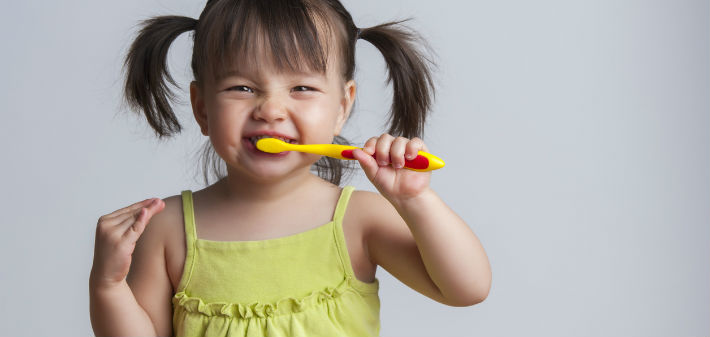Thanks to key advances in modern dental care, such as toothbrushes, toothpaste, oral surgery, and restorative procedures, maintaining oral health and hygiene is less painful and more convenient than ever before.
Dentist visits today are simple and straightforward — your dentist has all of the right tools they need take care of your teeth and ensure that you have the most pleasant experience possible. But can you imagine going to the dentist 100, or even 1,000 years ago? Thankfully since then there have been many key advances in the history of dentistry that now make your dental appointments and at home dental care as painless and convenient as possible.
Toothbrushes
Hundreds of years ago, dental care was very different from what it is today. The toothbrushes that we use today didn’t surface until the 1800s. The first toothbrush-like instrument was called a “chew stick” and was simply a twig with a frayed end that people would rub across the surface of their teeth. Eventually, bristle brushes were invented that used hog or horse hair. The modern toothbrush, made with plastic handles and synthetic nylon bristles, entered the market in 1938 while the first effective electric toothbrush was introduced in the United States from Switzerland in 1961.
Toothpaste
Early toothpastes consisted of a variety of ingredients, from the honey and dried flowers used in ancient civilizations to the more questionable concoctions of the Middle Ages. Unfortunately, some of these ingredients tended to be corrosive to tooth enamel, causing teeth brushing to be more damaging than protective. Fortunately, key advances in the history of dentistry have not only perfected the modern minty toothpaste recipe, but have made it better by producing collapsible tubes at the turn of the century and adding fluoride in the 1950s.
Oral Surgery
Researchers have found references to tooth extractions dating back to 500 BC. And then, there wasn’t such a thing as anesthesia. Numbing medication has come a very long way. In the late 18th century, a British chemist started experimenting with nitrous oxide, or “laughing gas.” After oxygen was added in the following years, the gas became a staple in oral surgery by the late 19th century. It wasn’t until around 1900 that procaine (also known as Novocain) was synthesized by a German chemist, providing the same numbing properties but without the giggles.
Tools for tooth extractions have thankfully changed as well. What used to be a simple chisel-and-mallet technique is now a carefully strategized process based on creating a comfortable and painless experience for the patient. Chisels, mallets, and nails eventually were replaced by more modern instruments such as forceps and air drills, the same tools that dentists use today.
Around the year 700 we see the first mention of silver amalgam use for fillings in China. Over the years there have been many different materials used for fillings, ranging from gold to lead to tin, all developed in the 19th century. Silver fillings today are the cheapest method of filling teeth and are made from silver, tin, copper, and mercury. However, tooth-colored fillings made of composite resin have become the most popular method of filling teeth since the 1990s.
Dentures
Before modern X-rays and diagnostic tools, if there was an issue with a tooth, the first instinct was to have it pulled. Many people were given dentures prematurely, eventually leading to extensive gum issues. Today, we have many different ways to treat teeth using preventative dental care so that we are able to keep them for a long time before it’s time to get dentures.
It’s nothing short of an understatement to say that key advances in the history of dentistry have allowed the dental profession to become what it is today. Your dentist can now provide quality dental care using the best of modern technology. Arkansas Family Dental provides gentle family dentistry to advance the health and appearance of your whole family’s teeth. Schedule an appointment with one of our professionals today or call 501-683-8886 with your questions.

